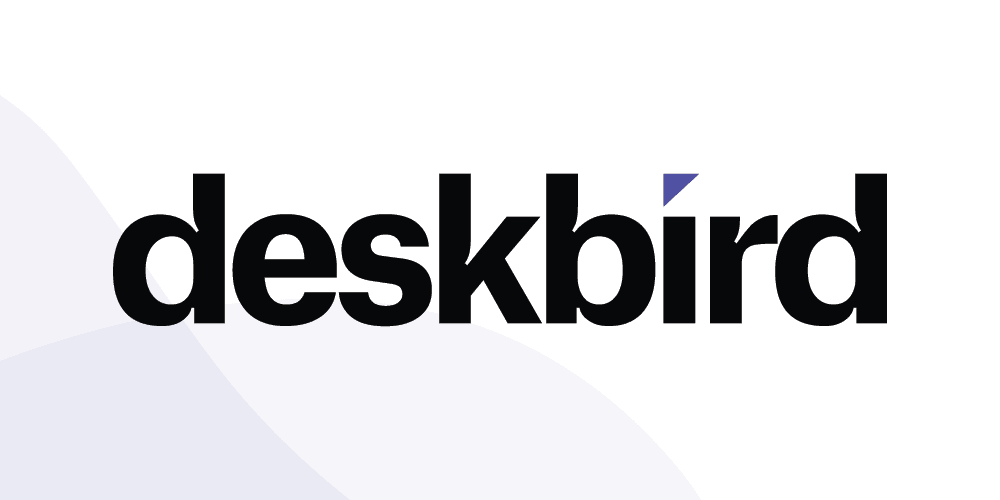Employee Freedom to Work From Home: How it Helps Build Trust

Lack of trust in the workplace and over-controlling environments lead to a decline in productivity, collaboration, and motivation.
Meanwhile, employees who trust their bosses are more likely to go the extra mile at work, suggest improvements and invest additional effort. They also make better choices, consider the repercussions of their actions, and are generally less selfish.These great qualities work both in and out of the office.
As the COVID-19 pandemic hit and everyone was sent home, some team members processed this shock with proper communication and great performance, enjoying the benefits of working from home at the same time. Some, unfortunately, couldn’t seem to adjust to their new remote lifestyle, eventually causing friction and dragging down overall productivity.
However, now, as we’ve learned to better navigate the world of hybrid work, the question stands: how should HR organize employee freedom to work from home for most productivity and employee well-being?
Employee Freedom to Work From Home Asks for a Reliable Remote Work Structure
Across industries, expectations of flexible working grow. Companies are racing to develop remote working policies that balance employee freedom to work from home and secure workflow that leads to results and growth.
People do want to have the option to work from home when they want. 61% of employees who have their office available choose to work remotely, as this Pew Research Center 2022 study concluded. Moreover, researchers expect that remote work is here to stay. In 2021, the National Bureau of Economic Research found that less than 30% of workers expect to return to full-time in-office work, as it was before the COVID-19 pandemic.
So, what are the policies and arrangements that companies can implement to make the best of hybrid work? Many options are currently used, each with its pros and cons. Some companies practice specific in-office days. For instance, company leaders might expect their teams to come in on Monday and Thursday but let them choose to work at home on the other days. Setting such fixed in-office work hours has a great benefit: organizing teamwork and in-person meetings is just so much easier.
Other organizations practice giving employees the freedom to work from home any day they like. It may help not only achieve a better work-life balance but also build trust and empower workers by letting them organize their work independently. This works great for companies that build their corporate culture around accountability and responsibility.
The thing is, giving freedom to employees to do as they like requires seeing them as adults capable of making independent decisions for the best of the company. The truth is most people are self-motivated and eager to show great productivity in the workplace they belong. Moreover, they expect their companies to treat them accordingly. In our recent article, we explored the concept of a “liberated company”, a place of trust and high achievement for responsible people and accountable leaders.
Yet even without radical work organization philosophies, a task stands: organize work from home in a way that employees find it easy and efficient to choose remote work days without losing even a bit of productivity.
Accompany employee freedom to work from home with policies and tools needed for success
First, think about the efficient equipment and tools for remote work in full consideration of your company culture. As an HR, you need to establish if remote working is right for chosen departments or project groups and give remote staff the correct tools and training to support them. Ensure the remote employees have great hardware they can use to communicate with colleagues. Ask them if they prefer to communicate via video call or text, as sometimes video calls can seem too intrusive. In such cases, a text-based workflow does the trick.
Second, remember that training is crucial. No responsible person can make the best use of work freedoms without proper skills and knowledge. Your employees will feel the most engaged, productive, and fulfilled if they know how to do their work well. Additionally, some employees may require training in using their new software. Similarly, their managers should receive training on how to manage a remote team effectively.
Third, it’s worth mentioning that employee freedom to work from home can be both personal and within a team. Departments or project teams are the most close-knitted groups in any company. While you can give each individual opportunities to plan remote days for themselves, their decisions will impact their team first. So it makes the most sense to develop efficient teams to exercise joint freedom to decide when to meet and collaborate.
And finally, no freedom to pick remote days comes without complete trust between employees and the company. This prompts the ability to communicate easily and enjoy well-organized remote work regardless of location and time zone differences. Let’s dive deep into how to ensure a developing trust in a hybrid workplace that gives employees the freedom to work from home when they desire.
3 Pillars of Trust Against Work-from-Home Policies
Across all types of relationships, trust is the basis for success. In a personal relationship, such success would be a meaningful and fulfilling connection that brings comfort and personal growth. In work relationships, trust leads to a positive view of the company, the pursuit of its growth, and a sense of belonging.
Let’s figure out how the freedom to work from home helps build trust in the workplace by dissecting the three pillars of trust as suggested by a Harvard Business Review assessment by Jack Zenger and Joseph Folkman. The authors of the study looked at 87’000 leaders’ management styles and highlighted 3 such pillars: positive relationships, good judgment/expertise, and consistency.
Build Reliable Relationships in Remote Settings
When it comes to work relationships in a remote setting, we can agree that it’s still challenging to keep them up, either with rooted employees or new hires. However, granting free choice of remote days shows respect for colleagues’ personal boundaries and faith in their abilities to work from a distance. This is the first proactive step a leader can take.
Trust in a remote environment has to be established through constant interaction and communication, just as with regular 8-hour in-office days. Though it can be more difficult with spread-out teams and time zone differences, empathy is key here.
Extend the understanding you show for employee work-life balance to their planning of online or offline meetings, in-office days, and performance. This is a 2-way street, though. You should expect your team to return this approach with respect to company goals and corporate culture.
For many people, working from home proved a life-changing experience, and they showed great performance with it. But not everyone is great with remote work. To ensure consistency with work-from-home policies, it’s important to monitor outcomes, audit tasks with insight, and make sure communication is fluent.
Don’t forget that good communication isn’t only one-on-ones with employees that have questions and require attention. It’s also about well-planned meetings (making sure only required specialists are present) and non-formal fun events as well. Giving options and engaging employees in a well-rounded experience is vital.
Developing trust through responsible freedom to work from home means showing respect to each other, having faith in the team to do the job, making sure that the teams are engaged and informed, and enjoying fun moments with colleagues. That would be the first pillar standing strong.
Provide Fair Judgement of Employee Performance
At the end of the day, work relationships are key to great performance and the achievement of business goals. So, while managing a freedom-based approach to remote working, HR and leaders must track productivity and performance. This is where judgment and expertise come into play.
The core of trust is based on the confidence that people can do their job with competency. As decision-makers, leaders need to make sure they have the right people with the right skills on the team regardless of their distance from the office. So it’s well worth the effort to streamline processes with an emphasis on efficiency, both for management and employees.
Additionally, it is important to proactively establish guidelines and expectations for remote work, ensure clear communication, and provide resources and support. In this way, you show your team that you not only trust them to make decisions on their workflow but provide tools to make it work.
The key is to weave in the facilitation of workflow, analyze work samples to track accuracy, and ensure that all team members have sufficient access to communication channels at all times. By developing effective communication and problem-solving strategies, you can make the process effortless.
The clear and fair work conditions make it so much easier for employees to collaborate, get creative, and make meaningful contributions in a remote work environment. This fosters an atmosphere of trust and respect.
Practice What You Preach and Provide Consistency
One big element of trust in the workplace is leaders’ consistency with the policies they enforce and general trustworthiness as a person. Leaders should follow the same rules, possess a professional and assertive attitude, and show respect for the rules and etiquette of remote work. Doing so will create a positive culture for remote workers and set a good example for the rest of the team. With consistent, transparent leadership, the trust needed for successful remote work will be established.
Moreover, by showing respect and reliability to employees, they’re showing that they can be trusted as well. This consistency is essential to maintaining trust with employees and should be emphasized through regular training and coaching.
Consistency can be provided by making sure that all policies and protocols are clearly communicated and expected to be followed. Leaders should make sure remote workers have access to all necessary resources, such as technology and office supplies, and that they have clear expectations of their roles and responsibilities. Leaders should also regularly check in with the team members to provide support and feedback on their performance.
Finally, leaders should also recognize and reward employees for their hard work and contributions. By following through on expectations and providing consistent guidance and communication, trust can be established and maintained.
Communication is Key to Building Trust in the Workplace
As we can see, open and transparent communication is mentioned in every one of the 3 pillars of trust in the workplace. The conclusion is that clear, honest communication is essential in building trust in the workplace and fostering an environment of collaboration, productivity, and employee engagement.
Regardless of the type of workplace, trust is essential for successful remote work and can be established and maintained through consistent leadership, clear communication, and proper resources.
In a way, proper communication is intuitively expected when you give employees the freedom to work from home whenever they decide to do so. In the end, such work arrangement doesn’t include impromptu conversations by the coffee machine or long hours in conference rooms. People want efficiency for their own sake and for the business. And great efficiency comes with blooming trust.

Halyna OSADCHA
Guest Writer, a Hybrid Work Devotee.




